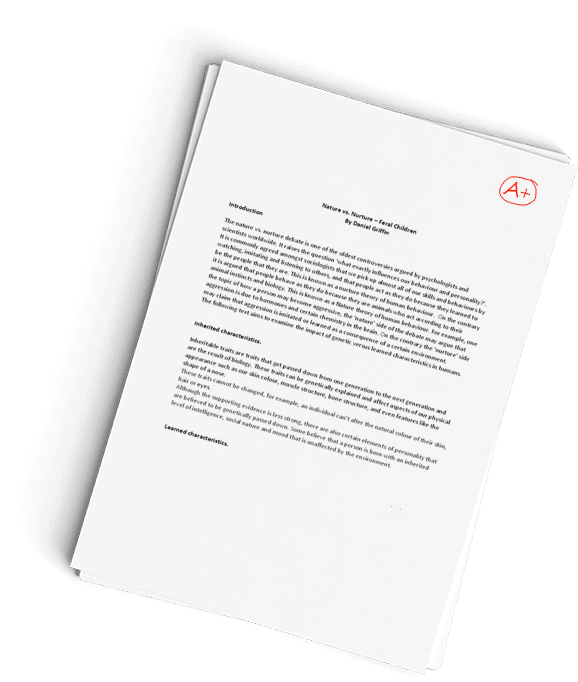Using Research to Select a Therapeutic Modality Response
Question Description
Respond to two colleagues who selected a case study different from yours:
- Compare and contrast the article you selected with your colleagues article in terms of how they might inform appropriateness for use with the identified client.
- Explain how reviewing the different studies presented in this Discussion influenced your decision about whether you would use the therapy, given various evidence for the different treatment modalities.
Colleague 1: Allison
Class,
For this week I researched different CBT techniques for middle-aged veterans who had PTSD and were alcohol dependent. This article showed positive data for peer-supported web-based CBT training versus the self-managed web-based CBT training for primary care veterans.
Possemato, K., Johnson, E. M., Emery, J. B., Wade, M., Acosta, M. C., Marsch, L. A., Rosenblum, A., & Maisto, S. A. (2019). A pilot study comparing peer-supported web-based CBT to self-managed web CBT for primary care veterans with PTSD and hazardous alcohol use. Psychiatric Rehabilitation Journal, 42(3), 305313. https://doi-org.ezp.waldenulibrary.org/10.1037/prj0000334
All the participants were primary care referred and had to have both PTSD and hazardous alcohol use and were observed pre-treatment and post-treatment 24 weeks apart. A multitude of assessments was used to conduct the initial data: The Clinician Administered PTSD Scale (CAPS) and Alcohol Use Disorders Identification Test was used to measure the 17 criteria of PTSD and alcohol use and finally, the PTSD Checklist-Military helped gauge their PTSD symptoms in the last month. All were conducted over the phone (Possemato, 2019).
The use of peer support specialists in primary care to help treat veterans symptoms was useful leading me to believe that this form of CBT guided with peer support would be good for Jake Levy. We know that going to peer support groups through the VA was useful to Jake as well as having help for his drinking in AA (Plummer, Makris, & Brocksen, 2014,p. 16). Being able to show himself that he is in charge and can help himself as well as the advice and referrals from his social worker and primary care could be effective for him and his family. I would use CBT therapy for veterans with PTSD because it has a psychotherapy approach to problem-solving that allows them to work at their own pace. Knowing the military culture, being pushed into doing a treatment, group, etc that is not wanted can have the opposite effect. So to be able to have them work at their own speed within these CBT modules guided with peer support and comradery that is often needed is important in seeking treatment for Veterans.
Allie
Possemato, K., Johnson, E. M., Emery, J. B., Wade, M., Acosta, M. C., Marsch, L. A., Rosenblum, A., & Maisto, S. A. (2019). A pilot study comparing peer-supported web-based CBT to self-managed web CBT for primary care veterans with PTSD and hazardous alcohol use. Psychiatric Rehabilitation Journal, 42(3), 305313. https://doi-org.ezp.waldenulibrary.org/10.1037/prj0000334
Plummer, S. -B., Markis, S., & Brocksen, S. M. (Eds.). (2014b). Social work case studies: Concentration year. Baltimore, MD: Laureate International Universities Publishing. [Vital Source e-reader].
Colleague 2: Kiera
HIV individuals report increased levels of co-occurring psychosocial problems that can conflict with self-care habits linked to HIV, such as commitment to treatment. In order to resolve interrelated psychosocial issues that can conflict with drug adherence and self-care among people with unregulated HIV, they have recently introduced trans-diagnostic, adaptive cognitive-behavioral treatment, and motivational questioning psychotherapy.
They established guidelines for participating, maintaining, and providing trans-diagnostic cognitive-behavioral therapy/motivational questioning to people with HIV. And facing psychosocial and systemic obstacles to mental and physical wellbeing by completing a field trial that included growth, clinical supervision, care, and administrative management of this project. These guidelines are identified, including, establishing relationships, treating HIV in the context of syndemics, treating the health effects of stigma, being agile in delivering care, and handling developing crises with appropriate skills(Harkness et al., 2020). These guidelines also include adjusting care to the educational, linguistic, and socio-cultural context, applying skills problem-solving, flexible preparation and follow-up, the location and management of mental health resources among providers, and the provision of safe and affirming physical space.
The researchers included clinical descriptions in addition to explaining these guidelines and highlight observational findings to explain and justify the use of these guidelines. There are techniques for clinicians dealing with underserved HIV clients that can improve the chance of clients using and continuing in trans-diagnostic CBT/MI care and can help ensure the care is useful and important to the lives of individuals with HIV(Harkness et al., 2020). Despite the psychosocial, behavioral, and systemic barriers facing underserved HIV participants, a range of interventions can increase the involvement and implementation of mental health care based on research using the interventions.
Future studies could continue to investigate the impact of using the techniques identified here on client outcomes, for instance, in a randomized study of this procedure, both in terms of mental wellbeing and HIV wellbeing.
References
Harkness, A., Rogers, B., Puccinelli, M., Ivardic, I., Ironson, G., & Safren, S. (2020). Engaging, retaining, and providing transdiagnostic integrated cognitivebehavioral therapy and motivational interviewing for underserved people with HIV. Psychotherapy, 57(1), 15-22. https://doi.org/10.1037/pst0000270
Have a similar assignment? "Place an order for your assignment and have exceptional work written by our team of experts, guaranteeing you A results."








